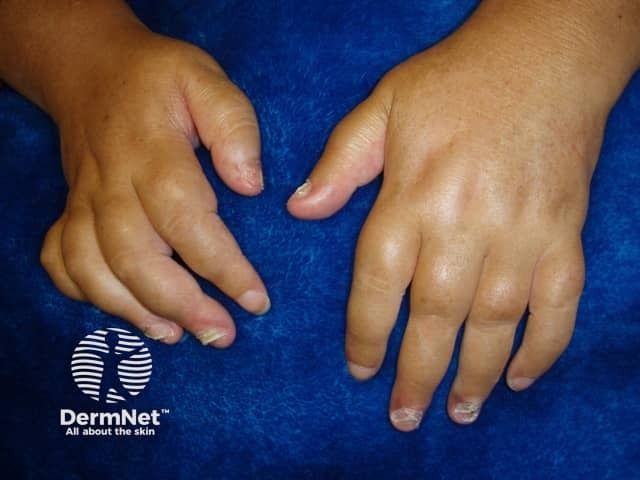- Case-Based Roundtable
- General Dermatology
- Eczema
- Chronic Hand Eczema
- Alopecia
- Aesthetics
- Vitiligo
- COVID-19
- Actinic Keratosis
- Precision Medicine and Biologics
- Rare Disease
- Wound Care
- Rosacea
- Psoriasis
- Psoriatic Arthritis
- Atopic Dermatitis
- Melasma
- NP and PA
- Skin Cancer
- Hidradenitis Suppurativa
- Drug Watch
- Pigmentary Disorders
- Acne
- Pediatric Dermatology
- Practice Management
- Prurigo Nodularis
- Buy-and-Bill
Article
PDT safely combats acne, rosacea
Additionally, recent research has shown that long-term use of antibiotics increases women's risk of breast cancer.
Miami Beach - Compared to existing alternatives, photodynamic therapy (PDT) can provide safe, lasting relief for sufferers of acne and rosacea, according to Bruce E. Katz, M.D.

Starters For starters, the U.S. Food and Drug Administration recently reported that its warnings against pregnant women using Accutane (isotretinoin, Roche), along with a massive educational campaign by the manufacturer, have had no significant impact in reducing pregnancies among women taking the drug. Therefore, the federal government has announced it will take stricter measures toward that end.
News articles also have linked depression and suicides to the drug.
"A lot of this is not true," he says. "But the media has made a big issue of it. So many people are very hesitant to take Accutane. And it's going to be more difficult to prescribe it because there's going to be a whole registry and rigmarole to get people on it."
Additionally, recent research has shown that long-term use of antibiotics increases women's risk of breast cancer (Velicer CM et al. JAMA. 2004 Feb 18;291(7):827-835.).
"This has caused quite a furor, and a lot of our patients are coming in saying, 'I was on antibiotics but don't want to stay on them anymore because of that risk.' Or if you suggest (antibiotics), they don't want to go on them," Dr. Katz says.
New approaches As a result, dermatologists are seeking new approaches to treating acne, particularly severe acne. One option is laser PDT, which Dr. Katz and his colleagues initially used for treating sun damage.
"If you look at the histology of people we've treated for sun damage using Levulan (5-aminolevulinic acid or ALA, Dusa Pharmaceuticals) and laser therapy, along with taking care of the sun damage, it does seem to have a thermal effect on the sebaceous glands. It works by basically applying a photo sensitizer, Levulan Kerastick, to the skin. Traditionally, it was left on for 14 to 18 hours. However, some studies have shown that it's just as effective if you leave it on for one hour (Alexiades-Armenakas MR, Geronemus RG. Arch Dermatol. 2003 Oct;139(10):1313-1320.)," he says.
Shining a pulsed-dye laser (PDL) over the area to be treated causes the ALA to be absorbed by Propionobacterium acnes and converted to protoporphyrin 9, which destroys the bacteria.
"It also seems to reduce the output of the sebaceous gland, so the skin becomes less oily as well as being cleared of acne," Dr. Katz says.
In a soon-to-be-published study, he and his colleagues found that using microdermabrasion before the ALA can cut the time required for this drug to work down to 10 minutes.
"It actually works better than if you leave it on for an hour by itself," he says.
Dose-ranging study In this dose-ranging study, researchers treated the backs of 10 acne patients. They gave each patient ALA in three different ways - by itself for one hour on one area, combined with ultrasound for 10 minutes on another, or two passes of microdermabrasion followed by application of ALA for 10 minutes on a third spot. They then irradiated all three areas with a PDL operating either 15 or 22.5 joules.





